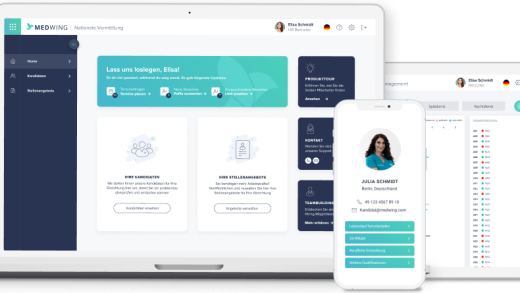In June we published updated versions of our Hybrid Cloud Data Protection Key Criteria and Radar reports. This year we decided to split most of our Radars in two to give a better view of the market landscape to our clients. In fact, categorizing solutions for either SMBs or Enterprises makes it more likely you will find a solution that is well-suited to your organization. Here are two slides from the webinar where I talk about the two groups:

The data protection market is evolving quickly and what is really interesting is that for some of the vendors we looked at we found a compelling vision along with a strong execution, showing them to be in similar positions as innovators and outperformers in both the enterprise and SMB market segments. The reason is simple: The role of data protection has radically changed over the last few years as users’ needs have evolved beyond traditional data protection.
Hybrid cloud data
Irrespective of the organization’s size, IT teams are developing complex hybrid cloud strategies. Often, this means an on-premises infrastructure associated with multiple public clouds and SaaS applications. For some, the goal is to choose the right discrete tool for every task, ideally enhancing flexibility while optimizing cost-effectiveness. This “DIY approach” can be a great strategy but it can also create several silos—and challenges that can hamper future initiatives, increase security risks, or render compliance with company policies or regulations particularly difficult, not to mention the impact that a bad data management strategy can have on the IT budget.
The moment you start thinking about hybrid cloud, that’s when you should think about how your data will be managed and protected. Legacy approaches to managing and protecting your data within a single environment can be tricky. Now with your data being spread across multiple environments it is critical to understand the challenges and hidden costs. This is why the Key Criteria report on hybrid cloud data protection includes data management, disaster recovery orchestration, analytics, and advanced security among the most important evaluation factors across environments.
Don’t get me wrong, and excuse the oversimplification, but I think that today data protection in the form of backup and recovery is table stakes. Yes, scalability, performance, and support for legacy and next-generation environments are important, but they are not what will make a difference and give you an edge over the competition. If you are looking for the best return on investment (ROI), you should start to think about what you can do with the data you’re backing up, no matter where it is located. In fact, data is the most important asset of every type of business now, no matter the size of the organization. This means that every organization, even the smallest, should take advantage of data protection and management [3] tools.
How to exploit the potential of HCDP
First, the goal is to get full visibility of your infrastructure and data, which will make it easier to set up protection policies and verify they are consistent across the board. Moreover, this simplifies operations and can make information easily accessible to key authorized people in your organization. For example, the Cohesity Helios Data Management Platform offers a formidable user experience that provides a single management tool for infrastructures and data on a global scale. The beauty of it is its deployment model: the administrative interface is a SaaS solution, making it easy to adopt no matter the size of its organization or the expertise of its IT teams.
I bring up Cohesity because I have talked to several of their customers lately, both for my reports and because of my interest in seeing how they use Cohesity products in real life. And, of course, as I have already written multiple times, data protection has now become the first step of a longer and much more complex process to unleash the real potential of your data. Users are finally understanding that data protection is no longer a liability but the key to taking full advantage of data stored in your systems and reusing it intelligently.
This doesn’t at all diminish the role of data protection, which is actually more important than ever because of security threats like ransomware. In fact, data protection is at the base of multiple data management processes. Let’s look again at Cohesity. AutoNation, a long-time Cohesity customer (and one of the largest automotive retailers in North America), started implementing Cohesity’s data protection offering because of its architecture and ease of use. AutoNation wanted a solid and scalable next-generation backup solution to replace a legacy environment that was no longer up to the task. After adopting the solution for backup and restore—and saving around 60% of sysadmin time to manage backups—the company discovered it could take advantage of copy data management features to create test/dev environments for its developers quickly and safely, consolidate several NAS systems thanks to Cohesity’s file system characteristics, and leverage Cohesity’s automated tiering features to move infrequently accessed data to the cloud. Infrastructure simplification, streamlined operations, improvements in the development process, and additional savings introduced by integration with the cloud all contributed to dramatically improve TCO and ROI figures.
And it is not only large organizations that found their way to Cohesity. I found a very similar adoption path in smaller companies. For example, Sky Lakes, a medical center in Oregon US, turned to Cohesity because of its innovative HCI architecture. After adopting the solution for backup, Sky Lakes reported a remarkable improvement in the time spent on backup management, which moved from one person essentially dedicated to it to a trivial five minutes per day to manage backups. Following this first positive experience, the Sky Lakes IT team consolidated more and more data on Cohesity, including file shares for critical medical records and backup for Microsoft 365, taking advantage of global search and analytics features on a daily basis. Furthermore, last year the IT team was able to respond brilliantly to a vicious ransomware attack thanks to Cohesity’s ransomware protection capabilities and is now looking at implementing automated DR with the recently announced DRaaS from Cohesity.
This is what I mean when I talk about data protection as the first step in the data management journey. Both organizations, very different from each other, started with backup but took advantage of the data management platform they adopted to consolidate data and simplify operations, improve on TCO, and expand the options available for future development. In the end, this amounts to flexibility and the ability to respond quickly to changing business needs. By having data logically organized in a single domain, solutions like Cohesity can offer more options to evolve the infrastructure and the services associated with it.
Data management a la carte
If we analyze the Sky Lakes and AutoNation cases, we find that they are not much different from other users out there. If the experience is good during the adoption phase, the user gets more confident about the technology and starts to expand its footprint within their organization. When this happens, the vendor must be ready to support this expansion and provide additional options—without looking like a hammer in search of a nail.
In fact, the biggest challenge is to find a solution that is modular and flexible enough to satisfy a growing number of use cases while maintaining usability and agility as top priorities. Data management is a good example here. What does data management mean to you? For some, it is about analytics and reporting; for others, it is about global search, compliance, risk assessment, integrity, or e-discovery. Or something else. The list can be very long, and you may need it for a limited amount of time or forever. Moreover, there are the persons and processes involved. A do-it-all data management solution doesn’t actually exist, but now that we have removed silos with data consolidation, we have a big data lake built upon our backups. How do we take advantage of it?
Let me use Cohesity as an example one more time. Cohesity has been talking about data management since I first met them when they were still in stealth mode. They built a scalable platform and a set of interesting features for data management, but they can’t do everything. That would take too much time and they could quickly lose focus on their core product. What they did instead is build a marketplace. This is not a unique approach in our industry (look at the public cloud for, example), but it is brilliant, nonetheless. Cohesity is now populating its marketplace with a series of solutions from virus scanning to sophisticated file analysis for compliance and so on. These “apps,” for lack of a better term in this context (and also because the user experience is similar to what you can expect from an app store), are fully integrated with the platform thanks to an intuitive installation and configuration process, a standard UI, and the ability to access data stored in the Cohesity platform. At the end of the day, from the user perspective, this is a natural extension of the platform that is tailored to each individual user. It allows Cohesity to focus on its core while providing additional data management capabilities to its platform through trusted partners. The user can install, test, and verify every application and quickly decide if it is what they need. In addition, Cohesity is working with its partners to make the solutions in the marketplace easier to acquire with a cloud-like billing process.
Key takeaways
I ended up talking more about data management than data protection in this blog. But for me, it is clear that we need to go beyond traditional data protection if we want to make the most of our data. Data protection is mandatory to survive user and system failures as well as disasters and cyberattacks, but if you think about it only for these use cases, it is just a form of insurance. We should start to think about it as a high return on investment instead.
Now, the real return on investment for a data protection platform can be found in its data management capabilities and in its ability to provide options to users for implementing their IT strategies, especially when it comes to using a hybrid cloud and all the complexities that come with that. From this perspective, Cohesity earned a leadership and outperformer position in our Enterprise and challenger and outperformer position in our SMB reports on hybrid cloud data protection because it built a solid data protection platform with outstanding data management capabilities that are now available to large organizations as well as smaller ones thanks to its backup as a service option, helping to reduce the initial investment and maximize ROI.
To learn more about Cohesity’s next generation data protection solutions, download a free copy of the Solutions Profile here.











